Lion Tattoos: Meanings, Designs, and Placement Ideas
- Leonardo Pereira
- 1 day ago
- 27 min read
Are you considering a lion tattoo but feeling overwhelmed by the countless design options, placement considerations, and symbolic meanings? You're not alone. Lion tattoos rank among the most sought-after designs in 2025, combining powerful symbolism with stunning artistic possibilities.
This comprehensive guide explores everything you need to know about lion tattoos – from traditional lion head tattoos and realistic lion portraits to geometric lion designs and watercolor interpretations. Whether you're planning your first tattoo or adding to your collection, this article provides expert insights to help you make an informed decision.
What You'll Discover in This Complete Lion Tattoo Guide:
Lion tattoos remain among the most popular designs in tattoo art, combining powerful symbolism with striking visual impact. These majestic creatures translate beautifully to skin art, with their distinctive manes, expressive faces, and powerful bodies offering artists rich visual elements to work with. From traditional American designs to photorealistic portraits, lion tattoos appear across numerous tattoo traditions worldwide.
The cross-cultural significance of lions contributes to their popularity. These magnificent animals have represented power, protection, and royalty across diverse civilizations throughout history – from ancient Egyptian sphinxes to medieval European heraldry. This universal recognition makes lion tattoos meaningful across cultural boundaries, connecting wearers to symbolic traditions spanning continents and millennia.
Lion imagery accommodates diverse personal meanings. For some, a roaring lion represents strength and courage in overcoming obstacles. Others choose regal, composed lion portraits to symbolize dignity and leadership. The lion's family-oriented nature – living in prides with strong social bonds – makes these designs particularly meaningful for those emphasizing family connections.
The technical versatility of lion tattoos further expands their appeal. Designs range from small, simple outlines perfect for first tattoos to elaborate compositions covering entire backs or sleeves. This scalability makes lion tattoos accessible to everyone – from those seeking small, meaningful symbols to collectors dedicated to large-scale body art projects.
Lion Tattoo Meanings and Symbolism

Strength and courage represent the most universal symbolic associations with lion tattoos. Many choose these designs to commemorate personal transformation or overcoming significant challenges. The lion's reputation for fearlessness resonates particularly with those who have confronted difficult circumstances, making these tattoos popular for marking recovery from illness, survival of trauma, or triumph over adversity. Beyond physical strength, lion tattoos often represent moral courage and the willingness to stand firm in one's convictions despite opposition.
Leadership and authority symbolism draws on the lion's status as "king of the jungle." For many wearers, lion tattoos represent aspiration toward leadership qualities – wisdom in decision-making, responsibility for others' welfare, and the balance between assertiveness and restraint. Business leaders and entrepreneurs sometimes choose lion imagery to represent their professional ambitions. The lion's regal associations connect these tattoos to concepts of nobility and dignified authority rather than mere dominance.
Family protection and loyalty create another significant meaning category, particularly resonant for parents. The lion's natural behavior – living in family groups with cooperative hunting and cub-raising – provides powerful metaphors for human family dynamics. Lioness tattoos often represent maternal strength and fierce protection of children. Male lions' protective role toward their pride connects to paternal responsibility and family leadership. Some designs incorporate multiple lions representing different family members, directly symbolizing family relationships.
Spiritual and religious symbolism spans diverse faith traditions. In Christianity, lions represent both Christ (the "Lion of Judah") and resurrection. In Hindu traditions, lions serve as mounts for goddesses like Durga, representing divine feminine power. Buddhist lion imagery symbolizes protection of sacred teachings. African spiritual traditions often view lions as ancestral connections or spirit guides. These diverse associations allow lion tattoos to carry profound religious significance across various faith backgrounds.
Astrological connections are significant for those born under the Leo star sign (July 23-August 22). For these individuals, lion tattoos represent personal astrological identity, often incorporating zodiac symbols or constellations. Leo personality traits – confidence, creativity, passion, and natural leadership – align closely with general lion symbolism, reinforcing these qualities for those who identify strongly with their astrological sign.
Cultural and national pride emerges through lions featured in heraldry and national symbols. British lion tattoos often reference the three lions of the English coat of arms. The Lion of Judah holds special significance in Ethiopian culture. The Asiatic lion appears on India's national emblem. For those with Scottish heritage, the rampant lion of Scotland's royal banner creates meaningful connections to ancestral roots. These tattoos often serve as permanent connections to cultural heritage for people living away from their ancestral homelands.
Popular Lion Tattoo Styles

Realistic lion tattoos capture these majestic creatures with photographic precision, emphasizing accurate anatomical details and lifelike textures. Artists focus on individual whiskers, intricate mane textures, and subtle eye color variations to create three-dimensional effects. These designs typically employ sophisticated shading techniques, often using black and gray with selective color accents. While technically demanding and time-intensive, realistic lion tattoos offer unparalleled visual impact and detail that continues to impress as the tattoo ages.
Traditional and neo-traditional approaches create bold, graphic interpretations with strong outlines, simplified forms, and high visibility. Traditional designs feature thick black outlines, limited but vibrant color palettes, and stylized proportions that create instantly recognizable tattoos with excellent longevity. Neo-traditional styles incorporate more complex shading and expanded color options while maintaining bold outlines. Both approaches excel at creating designs that maintain their clarity and impact over decades, often incorporating elements like banners or stars that connect to established tattoo traditions.
Geometric lion tattoos break down the animal's organic form into angular shapes, lines, and patterns for striking modern interpretations. These designs range from subtle geometric influences to fully abstract compositions where the lion emerges from complex geometric patterns. Many incorporate dotwork techniques for shading and texture. This contemporary aesthetic appeals to those drawn to modern design sensibilities, creating innovative tattoos that maintain the powerful impact of lion imagery while offering creative interpretations that can incorporate personal elements within the geometric structure.
Watercolor lion tattoos blend structured lion imagery with fluid, painterly qualities that create ethereal, artistic interpretations. These designs typically maintain a recognizable lion form while incorporating vibrant color washes that appear to flow beyond boundaries, mimicking watercolor paint effects. Splashes, drips, and color bleeds extend beyond the main image, creating dynamic compositions with dreamlike qualities. While stunningly beautiful when fresh, these designs require particular consideration regarding longevity and artist selection, as the technique demands specialized expertise to create results that will age effectively.
Minimalist lion designs reduce the majestic animal to its essential elements – perhaps a simple outline, a few defining lines suggesting the mane, or abstract representations capturing the lion's essence with minimal detail. These clean, uncluttered interpretations create sophisticated, contemporary tattoos that work beautifully in smaller placements or as part of larger minimalist collections. The simplicity makes these designs particularly versatile across different body areas, while the reduced detail often translates to less painful and time-consuming tattoo sessions.
Tribal and cultural interpretations incorporate lion imagery into specific heritage art styles, whether Polynesian patterns, Maori spirals, Celtic knotwork, or other traditional forms. These designs honor both ancestral artistic traditions and the powerful symbolism of lions, creating meaningful connections to cultural heritage. The bold, graphic nature of many tribal styles creates visually striking designs with excellent aging properties. For those with specific heritage connections, these tattoos bridge ancestral identity and contemporary personal expression, often incorporating family motifs alongside the lion imagery.
Best Placement Options for Lion Tattoos

Chest and back placements offer expansive, flat canvases ideal for detailed lion designs. The chest provides a symbolically powerful location near the heart, with pectoral muscles creating natural framing for centered designs. Upper chest placements remain easily concealable with standard clothing while allowing display when desired. Back positions accommodate the largest and most detailed compositions, from full back pieces featuring complete pride scenes to centered upper back designs that create powerful symmetrical statements. These locations typically experience less fading than more exposed areas, helping preserve detail in complex designs.
Arm placements create versatile options balancing visibility with practical canvas considerations. Upper arm positions offer rounded, curved surfaces that accommodate medium to large designs, with muscle contours potentially enhancing the lion's powerful appearance. Forearm placements create more consistently visible canvases that the wearer can easily see daily, with the relatively flat surface allowing for detailed work that maintains clarity from most viewing angles. Full sleeve compositions incorporating lions create some of the most elaborate designs, using the entire arm to develop complex narratives or showcase the lion in environmental context.
Leg placements offer substantial canvas options with greater privacy and often reduced pain compared to upper body locations. Thigh positions provide large, flat surfaces ideal for detailed designs, with substantial muscle coverage typically reducing tattooing discomfort. Calf placements create visible statements when wearing shorts while remaining easily covered when desired, with muscular contour enhancing three-dimensional designs. The reduced sun exposure these areas receive helps preserve tattoo quality over time. For those concerned about workplace policies, leg placements often represent ideal compromises between meaningful tattoo placement and professional presentation.
Unconventional placements create distinctive and personalized lion tattoo applications. Side-of-neck positions create highly visible statements that cannot be easily concealed, representing significant commitments to the imagery. Hand and finger tattoos – perhaps featuring minimalist lion outlines – create extremely visible statements that impact daily interactions. Behind-the-ear positions accommodate miniaturized versions that create subtle yet impactful statements, often visible only when hair is styled to reveal them. Ribcage placements offer elongated vertical canvases ideal for lions in profile, with the location's privacy allowing for deeply personal symbolic interpretations.
The relationship between placement and design style significantly influences effectiveness. Highly detailed realistic designs typically require larger canvases with relatively flat surfaces to accommodate intricate elements. Minimalist and geometric approaches often work beautifully in smaller or more challenging placements, as their simplified forms maintain impact even at reduced sizes. Traditional styles offer excellent versatility across various placements due to their bold outlines and simplified forms. Watercolor approaches typically benefit from placements with reduced friction and sun exposure to help preserve their more delicate color transitions over time.
Lion Tattoo Designs for Men

Roaring lion head tattoos capture fierce power and dominance in striking portrait-style designs. These interpretations focus on the head and mane, typically depicted with jaws open in a powerful roar displaying impressive teeth and intense expression. The composition emphasizes the lion's most distinctive features – particularly the magnificent mane framing the face with dynamic, flowing lines. These designs range from highly realistic portraits to stylized interpretations that emphasize specific features for greater impact. The emotional power of the roaring expression connects directly to themes of courage, assertiveness, and unleashed strength that many men find resonant with personal values.
Full-body lion tattoos showcase the creature's powerful physique and predatory nature through complete anatomical representation. These designs capture the lion in various dynamic poses – perhaps mid-leap, stalking prey, or standing vigilantly – that emphasize muscular power and natural majesty. The substantial canvas requirements typically limit these designs to larger placement areas like the back, full chest, or complete sleeve compositions. These comprehensive designs often incorporate environmental elements like savanna landscapes or prey animals that create narrative context, transforming the tattoo from simple animal representation to a dynamic scene about power and natural order.
Lion and crown combinations create symbolic statements about leadership, authority, and personal sovereignty. These designs typically feature the lion head adorned with or positioned near a crown, creating direct visual references to the "king of beasts" concept. The crown element ranges from realistic royal regalia to stylized interpretations that maintain the symbolic association. This combination creates layered symbolism connecting natural power with human concepts of leadership that many men find meaningful as representations of personal ambition or responsibilities. The composition typically emphasizes the lion's regal qualities through posed expressions and composed demeanor rather than fierce aggression.
Family-themed lion tattoos use pride dynamics to represent paternal protection and family leadership. These compositions typically feature a male lion with one or more cubs, creating direct visual metaphors for the father-child relationship. Some designs incorporate actual portraits or names of children, while others take more symbolic approaches using natural interactions between adult lions and cubs to represent different aspects of fatherhood. These family-oriented designs often influence placement choices, with many fathers selecting locations near the heart or on areas associated with strength to reinforce the protective symbolism.
Tribal and cultural lion interpretations offer connections to heritage traditions while incorporating powerful lion symbolism. These designs interpret the lion through specific cultural artistic conventions – whether traditional Polynesian patterns, African tribal styles, Celtic knotwork, or other heritage art forms. The stylistic approaches vary dramatically based on the specific cultural references, from flowing curves and geometric patterns to intricate knotwork. For men with specific heritage connections, these tattoos create meaningful bridges between ancestral identity and contemporary personal expression, often incorporating family motifs alongside the lion imagery.
Lion and scripture/quote combinations connect spiritual or philosophical values with lion imagery. These tattoos typically incorporate meaningful text – whether religious scripture, philosophical quotes, or personal mantras – alongside lions that reinforce the textual message. For men with Christian faith backgrounds, "Lion of Judah" references often incorporate Bible verses about strength or divine protection. Secular approaches might pair philosophical quotes about courage or leadership with lions that visually embody these concepts. These combinations create intellectually and spiritually rich tattoos that communicate complex personal values rather than simply appreciating the animal's aesthetic qualities.
Lion Tattoo Designs for Women

Lioness tattoos offer powerful feminine interpretations focusing on protective ferocity, hunting prowess, and maternal strength. These designs highlight the distinctive characteristics of female lions – the absence of manes, more streamlined facial features, and often more agile body proportions. The symbolism connects directly to the lioness's role in pride dynamics, where females handle most hunting and cub protection, creating meaningful representations of feminine strength that balances nurturing with fierce capability. Many women choose these designs to represent their own protective instincts toward children or loved ones, with some incorporating cubs to directly symbolize mother-child relationships.
Lion and flower combinations balance fierce power with natural beauty, offering tattoos that incorporate traditionally feminine elements without diminishing the lion's strength. These compositions typically feature lion portraits surrounded by or integrated with floral elements – roses being particularly popular, though wildflowers, lotus blossoms, or other botanicals create distinctive variations. The contrast between the predatory animal and delicate flowers creates visual interest while representing the balance many women maintain between strength and gentleness. The color opportunities allow for vibrant, feminine aesthetics even within powerful imagery, with floral elements introducing soft accents that complement the lion's natural tones.
Celestial lion tattoos connect lion imagery with cosmic elements like stars, moons, and galaxies, creating mystical interpretations that resonate with many women's spiritual sensibilities. These designs might feature lions composed of constellation patterns, manes flowing into star fields, or faces emerging from cosmic backgrounds. The celestial elements add layers of meaning beyond traditional lion symbolism, incorporating concepts of destiny and spiritual connection. These combinations create particularly powerful statements for women born under the Leo zodiac sign, directly connecting personal astrological identity with the lion's natural qualities.
Watercolor and artistic lion interpretations appeal to women seeking more creative, expressive approaches to this powerful symbol. These designs emphasize artistic qualities over literal representation, using techniques like watercolor effects, abstract elements, or painterly styles to create unique interpretations. The fluid, colorful nature of these designs allows for more feminine aesthetic qualities while maintaining the lion's powerful symbolism. The artistic approach creates opportunities for highly personalized interpretations that reflect individual creative sensibilities rather than conventional representations.
Queen lioness concepts emphasize feminine leadership, independence, and self-sovereignty through regal lioness imagery. These designs often incorporate crowns, jewels, or other symbols of queenship alongside powerful female lion imagery, creating direct visual statements about feminine authority and self-determination. Unlike some male-oriented crowned lion designs that emphasize dominance, these queen lioness tattoos typically focus on wisdom, strategic leadership, and earned authority. For many women in leadership positions or those who value independence, these designs represent both personal qualities they embody and aspirational values they pursue.
Protective mother lioness designs create powerful symbols of maternal strength and fierce family devotion. These tattoos typically show lionesses in protective stances with cubs, directly representing the mother-child bond and the instinctive protection mothers feel toward their children. Some designs incorporate actual children's names, birthdates, or symbolic elements representing specific family members. The natural behavior of lionesses – who will fight to the death to protect their young – creates perfect metaphors for maternal love that many women find deeply resonant with their own experiences of motherhood and family protection.
Small Lion Tattoo Ideas

Minimalist lion outlines reduce the majestic animal to its essential contours, creating elegant, understated designs perfect for smaller placements. These tattoos typically feature continuous single-line techniques or simple silhouettes that capture the lion's distinctive profile with minimal detail. The simplified approach allows these designs to maintain their impact even at very small sizes (1-2 inches), making them ideal for discreet placements like wrists, ankles, behind ears, or fingers. Despite their simplicity, these minimalist interpretations remain instantly recognizable, communicating the lion's powerful symbolism through clean, contemporary aesthetics that appeal to those who prefer subtle rather than elaborate tattoo statements.
Leo zodiac symbol combinations create meaningful connections between astrological identity and lion imagery. These compact designs might incorporate the Leo symbol (♌) alongside small lion elements, perhaps with constellation patterns, birth dates, or other personalized astrological references. The relatively simple components work effectively at reduced sizes, making these designs suitable for discreet placements while maintaining clear symbolic meaning. For those born under the Leo sign, these tattoos create permanent celebrations of their astrological identity and the personality traits associated with this fire sign – confidence, creativity, passion, and natural leadership.
Small lion head tattoos focus exclusively on the most recognizable and expressive part of the animal, creating impactful designs that work effectively even at reduced sizes. These compact portraits typically emphasize the most distinctive features – expressive eyes, noble profile, and characteristic mane – while omitting body elements that would require larger canvases for proper proportion. The concentrated focus allows for surprising detail even in small formats (2-3 inches), particularly when executed by artists specializing in miniature work. These designs work beautifully on wrists, ankles, shoulders, or chest, creating meaningful symbols that communicate strength and courage without requiring extensive canvas space.
Paw print designs offer subtle references to lion symbolism through simplified representations that work beautifully at small scales. These tattoos might feature realistic lion paw impressions or more stylized interpretations, sometimes incorporating small details like claws or pad patterns that identify them specifically as lion rather than generic feline prints. Some designs combine paw prints with minimalist lion elements or text to create more explicit symbolic connections. The compact, self-contained nature of paw prints makes them ideal for small placements like wrists, ankles, behind ears, or even fingers, offering discreet nods to lion symbolism that can be easily concealed when necessary.
Lion cub tattoos create adorable yet meaningful small-scale designs that emphasize playfulness, innocence, and potential. These tattoos typically feature baby lions in charming poses – perhaps playing, exploring, or displaying early attempts at roaring – creating endearing images that still connect to the powerful symbolism of adult lions. The naturally smaller proportions of cubs make these designs perfect for reduced canvas areas while maintaining proper anatomical representation. Many parents choose these designs to represent their children, with the cubs symbolizing both innocence and the potential for growth into strength and courage.
Small lion symbols derived from cultural traditions offer rich meaning in compact formats. These might include heraldic lions from family crests, stylized lions from ancient cultural representations, or lions rendered in traditional artistic styles from various heritage traditions. The simplified, graphic nature of many historical lion representations allows them to translate effectively to small tattoo formats while maintaining their distinctive characteristics and symbolic associations. These designs connect wearers to cultural heritage and historical traditions while providing practical options for those with limited canvas space or preferences for more discreet tattoo placements.
Large Lion Tattoo Concepts

Full back lion scenes create some of the most dramatic and detailed tattoo compositions possible, utilizing the body's largest canvas for elaborate artistic statements. These expansive designs might feature complete pride scenes with multiple lions in natural habitats, epic battle depictions between lions and rival predators, or majestic portraits where the lion's features extend across the entire back. The substantial canvas allows for extraordinary detail in mane textures, facial expressions, and environmental elements that wouldn't be possible in smaller formats. Many back pieces incorporate narrative elements that tell stories about strength, family protection, or natural order, creating tattoos with both visual impact and meaningful depth.
Sleeve compositions integrate lion imagery throughout the arm, creating cohesive artistic statements that flow naturally around the limb's contours. These designs might progress from shoulder to wrist with thematic development – perhaps transitioning from fierce roaring lion heads at the shoulder to more peaceful scenes or cubs toward the wrist, symbolizing the balance between strength and gentleness. The varied surfaces of the arm create interesting opportunities for composition, with the lion's features adapting to muscle contours in ways that enhance the three-dimensional effect. Full sleeve commitments allow for comprehensive exploration of lion symbolism through multiple elements and scenes connected by cohesive artistic approaches.
Chest pieces centered on powerful lion portraits create bold, symmetrical designs with profound symbolic placement near the heart. These tattoos typically feature the lion head as the central focus, often with the mane extending outward to follow the natural pectoral muscle contours. The placement creates natural framing that enhances the lion's majestic qualities while positioning this symbol of courage and strength over the heart – creating powerful metaphorical associations with the wearer's core values and emotional center. The substantial canvas allows for exceptional detail in the lion's most expressive features, particularly the eyes and facial structure that communicate its noble character.
Thigh and hip lion tattoos utilize the body's largest muscle group for expansive, detailed designs with excellent visibility control. These large, relatively flat surfaces accommodate elaborate compositions – from realistic full-body lions in dynamic poses to more artistic interpretations with decorative elements. The substantial canvas allows for exceptional detail while the placement offers flexibility in display, visible when desired through clothing choices but easily concealed in professional or formal settings. The natural muscle contours can enhance three-dimensional effects in the design, with the lion's powerful form complementing the body's own strength in this location.
Lion battle scenes depicting these magnificent predators in conflict with other powerful animals create dramatic large-scale compositions rich with symbolic meaning. These dynamic designs might show lions fighting traditional rivals like buffalo, crocodiles, or hyenas, creating visual metaphors for overcoming challenges or confronting adversaries. The action-oriented nature of these compositions requires substantial space to properly depict the movement, tension, and anatomical detail of multiple animals in combat. These narrative tattoos often represent personal battles the wearer has faced, with the lion's eventual triumph symbolizing their own victory over life's challenges.
Family pride compositions featuring multiple lions in protective formations create meaningful large-scale representations of family bonds and hierarchies. These elaborate designs typically include male lions, lionesses, and cubs arranged in naturalistic groupings that reflect actual pride dynamics, with protective adults surrounding younger members. Some designs incorporate personalized elements representing specific family members, perhaps through distinctive features or positioning that reflects family relationships. The substantial canvas requirements allow for proper anatomical detail across multiple figures while maintaining natural proportions and relationships between different pride members, creating comprehensive visual metaphors for family protection and unity.
Combining Lions with Other Elements

Lion and crown combinations create powerful symbols of authority, leadership, and personal sovereignty. These designs typically feature the lion head adorned with or positioned near a crown, creating direct visual references to the "king of beasts" concept and its associated qualities of noble leadership. The crown element ranges from realistic royal regalia to stylized interpretations that maintain the symbolic association without literal representation. This combination creates layered symbolism connecting natural power with human concepts of earned or destined leadership that many find meaningful as representations of personal ambition or responsibilities.
Lion and floral integrations balance fierce power with natural beauty, creating designs with visual contrast and symbolic depth. These compositions typically feature lion portraits surrounded by or integrated with floral elements – roses being particularly popular, though lotus blossoms, cherry blossoms, or wildflowers create distinctive variations with different symbolic associations. The contrast between the predatory animal and delicate flowers creates visual interest while representing the balance between strength and gentleness, fierce protection and nurturing care that many people strive to maintain in their lives.
Celestial lion designs connect lion imagery with cosmic elements like stars, moons, and galaxies, creating mystical interpretations with spiritual dimensions. These tattoos might feature lions composed of constellation patterns, manes flowing into star fields, or faces emerging from cosmic backgrounds that suggest deeper connections between natural power and universal forces. The celestial elements add layers of meaning beyond traditional lion symbolism, incorporating concepts of destiny, cosmic guidance, and spiritual connection. These combinations create particularly powerful statements for those born under the Leo zodiac sign.
Lion and compass/map combinations create meaningful symbols about finding direction through courage and inner strength. These designs typically incorporate navigational elements like compasses, maps, or nautical stars alongside lion imagery, creating visual metaphors about finding one's path through life's challenges. The directional symbolism of navigational tools complements the courage and strength represented by the lion, suggesting that knowing one's direction requires both guidance tools and the courage to follow difficult paths. These combinations appeal particularly to those who have overcome significant life challenges or made major transitions requiring both courage and careful navigation of new circumstances.
Lion and clock/timepiece integrations create rich symbolic statements about the temporary nature of power and the courage to face mortality. These designs combine lion imagery with clocks, hourglasses, or other time-measuring devices, creating visual metaphors about the relationship between natural strength and the passage of time. The combination creates memento mori themes – reminders that even the most powerful creatures remain subject to time's passage – while simultaneously suggesting that courage involves facing this reality with dignity. These philosophical tattoos appeal to those drawn to deeper contemplation about life's temporary nature and the courage required to live meaningfully despite this awareness.
Lion and cultural symbol combinations create personalized designs connecting individual heritage with universal strength symbolism. These tattoos incorporate culturally significant elements – perhaps national emblems, traditional patterns, or heritage symbols – alongside lion imagery, creating bridges between personal cultural identity and the widely recognized qualities lions represent. Examples include lions integrated with Celtic knotwork for those with Irish heritage, lions with Maori-inspired patterns for those connected to New Zealand culture, or lions with specific national symbols like maple leaves or eagles that represent homeland connections. These combinations create deeply personalized tattoos that honor both individual cultural roots and universal values of courage and strength.
Finding the Right Tattoo Artist

Specialization in animal portraiture represents perhaps the most important qualification when seeking an artist for quality lion tattoos. Review portfolios specifically for examples of big cat work, paying particular attention to how artists render fur textures, capture facial expressions, and create dimensional effects that bring these animals to life. The best artists demonstrate understanding of feline anatomy, natural movement patterns, and the distinctive characteristics that differentiate lions from other big cats. Look for consistent quality across multiple examples rather than single showcase pieces, as this indicates reliable skill rather than occasional success. Artists who specialize in animal work typically develop specific techniques for capturing fur textures, eye details, and the subtle anatomical features that create truly lifelike representations.
Style alignment ensures your chosen artist excels in the specific approach you envision for your lion tattoo. Realistic lion portraits require artists with exceptional shading skills, understanding of light dynamics, and meticulous attention to detail. Traditional and neo-traditional interpretations need artists who create clean, bold outlines and apply solid, smooth color saturation. Geometric or abstract approaches demand precision with straight lines, consistent patterns, and thoughtful composition. Watercolor techniques require specialists in this challenging style who understand how to create fluid effects that will age effectively. Review artist portfolios specifically for examples in your preferred style, as many tattooers specialize in particular approaches rather than excelling across all techniques.
Technical precision becomes particularly important for lion tattoos due to their distinctive features and the high visibility of any flaws in such recognizable imagery. Examine portfolio examples closely for line quality (smooth, consistent lines without wobbles or blowouts), shading gradients (smooth transitions without patchiness), and symmetry where appropriate. Pay attention to how well details are rendered – particularly eyes, whiskers, and mane textures that create the lion's distinctive appearance. Well-executed tattoos should show consistent technical quality throughout rather than mixing strong elements with weaker areas. This technical assessment proves especially important for detailed realistic work, where minor flaws can significantly impact the overall impression.
Consultation quality provides crucial insights into both artistic compatibility and professional standards. Professional artists should ask thoughtful questions about your vision, placement considerations, and symbolic intentions rather than simply accepting your initial ideas without discussion. They should provide honest feedback about what will work effectively at your chosen size and placement, suggesting modifications when necessary for long-term quality rather than agreeing to technically problematic requests. The consultation should include clear discussion of pricing, scheduling expectations, deposit requirements, and aftercare protocols. Artists should willingly answer questions about their experience, sterilization procedures, and approach to the specific challenges of your design. This interactive process helps ensure both artistic alignment and professional standards that will result in a positive tattoo experience.
Studio environment and hygiene practices reveal much about an artist's professionalism and commitment to client safety. Reputable studios maintain visibly clean workspaces with clear separation between preparation areas and tattooing stations. Equipment should be stored in sealed packages until use, with new needles opened in front of clients. Artists should wear fresh gloves throughout the process, changing them whenever they touch anything not directly related to your tattoo. Observe whether surfaces are covered with plastic barriers that are changed between clients and if the studio uses disposable equipment or has an autoclave (sterilization machine) for reusable tools. Beyond basic hygiene, the studio atmosphere should feel welcoming and professional, with good lighting, comfortable seating, and a generally well-maintained appearance that reflects pride in their work environment.
Lion Tattoo Aftercare Tips
Initial healing protocols significantly impact how well your lion tattoo will heal, particularly important for preserving the fine details that make these designs effective. Follow your artist's specific instructions, which typically include keeping the bandage applied by your artist in place for the recommended period (usually 2-24 hours depending on the bandage type). When removing this covering, do so gently in a clean shower, allowing warm water to help release any adhesive. Wash the area 2-3 times daily using lukewarm water and fragrance-free, antibacterial soap, gently patting (never rubbing) the tattoo with clean hands. Apply a very thin layer of the recommended aftercare product – whether that's a specialized tattoo balm, fragrance-free lotion, or other moisturizing agent. Avoid over-moisturizing, which can cause "wet healing" issues that blur fine details.
Sun protection represents the most crucial long-term consideration for maintaining your lion tattoo's quality. UV exposure causes fading and blurring that can significantly reduce the impact of detailed work, particularly problematic for realistic lion designs where fine details create the lifelike effect. Keep fresh tattoos completely covered when outdoors during the healing phase (typically 2-4 weeks). Once healed, apply broad-spectrum sunscreen with SPF 30+ whenever your tattoo will be exposed to sunlight, even on cloudy days when UV rays still penetrate. Consider protective clothing for extended outdoor activities, particularly for tattoos in commonly exposed areas like forearms. This sun protection discipline significantly extends your tattoo's vibrancy and detail retention, preserving the artist's work and your investment over decades rather than years.
Activity restrictions during healing help prevent complications that could compromise your lion tattoo's final appearance. Avoid swimming pools, hot tubs, saunas, and natural bodies of water until completely healed (typically 2-4 weeks minimum), as these environments introduce potential infection risks and chemicals that can affect healing quality. Limit intense physical activity that causes excessive sweating during the first week, as sweat contains salt and bacteria that can irritate healing skin. Avoid tight clothing directly over the tattoo, as friction can disrupt scab formation and potentially remove ink. For tattoos in high-movement areas, consider limiting activities that repeatedly stretch or compress the skin during initial healing to allow proper ink settlement.
Recognizing and addressing complications quickly helps prevent permanent issues that might compromise your lion tattoo. Normal healing includes redness, slight swelling, and mild tenderness directly in the tattooed area, clear or slightly yellow plasma discharge during the first 24-48 hours, and light scabbing that forms and sheds naturally. Warning signs requiring attention include excessive redness extending beyond the tattooed area, unusual warmth, significant swelling that increases rather than decreases after 48 hours, green or yellow pus discharge, or red streaking extending from the tattoo. If these symptoms appear, seek medical attention promptly rather than attempting self-treatment, as infections can permanently damage tattoo quality if not addressed quickly.
Long-term maintenance helps preserve your lion tattoo's quality beyond the initial healing period. Regular moisturizing helps maintain skin elasticity and pigment vibrancy, with fragrance-free, alcohol-free products typically providing the best results without introducing irritants. Avoid harsh exfoliants directly on tattooed skin, as these can gradually fade ink over time. Consider periodic touch-ups every 5-10 years depending on placement, sun exposure, and individual skin characteristics. These maintenance sessions allow artists to reinforce areas that have experienced fading or loss of definition, preserving the detailed elements that make lion tattoos visually compelling. This ongoing care represents a small investment that significantly extends your tattoo's aesthetic lifespan.
Cost of Lion Tattoos
The price of lion tattoos varies significantly based on several key factors, with size being the primary determinant. Small lion designs (under 3 inches) typically range from $100-300, medium pieces (3-6 inches) generally cost $300-600, while large or complex designs can exceed $1,000, with full back or sleeve pieces potentially reaching $3,000+. Design complexity significantly impacts pricing, with simple outlines costing substantially less than detailed realistic portraits that require advanced shading techniques and multiple sessions. Artist expertise creates perhaps the widest pricing variable, with renowned specialists commanding premium rates that reflect their technical skill and reputation.
Geographic location influences pricing structures as well, with tattoos in major metropolitan areas typically costing 30-50% more than identical work in smaller cities or rural areas. Most reputable artists require deposits ranging from $50-200 to secure appointments, which are then applied toward the final cost. Session length for detailed lion work typically ranges from 1-2 hours for small pieces to multiple full-day sessions for elaborate designs, with hourly rates varying from $100-300+ depending on artist reputation and location.
When budgeting for your lion tattoo, consider not just the initial price but also potential future costs like touch-ups (typically needed every 5-10 years for optimal appearance) and aftercare products. The investment value of working with established artists typically becomes apparent over time, as their work maintains its integrity and impact while less skilled work may deteriorate or appear dated. Understanding these pricing factors helps potential clients develop realistic budgets for their desired lion tattoos, ensuring financial preparation aligns with artistic expectations.
Celebrity Lion Tattoo Inspiration
Numerous celebrities showcase impressive lion tattoos that provide inspiration for design approaches and placement options. Ed Sheeran's chest lion tattoo stands as one of the most recognizable, featuring a large, colorful realistic lion head centered on his chest, representing his love for England (whose national football team uses three lions as their emblem) and his own Leo star sign. The placement and scale create a powerful statement piece that demonstrates how central chest positions can showcase detailed lion designs effectively.
Cara Delevingne's finger lion tattoo offers a completely different approach, featuring a small lion face on her index finger that creates a subtle but distinctive piece visible during daily activities. This minimalist interpretation shows how lion imagery can be adapted to even the smallest canvases while maintaining recognizable features. Justin Bieber's lion shoulder tattoo combines realistic techniques with strategic placement, using the rounded contour of the shoulder to enhance the dimensional quality of the design.
Demi Lovato's hand lion tattoo demonstrates how these designs can create powerful statements in highly visible locations, with her realistic lion portrait showcasing exceptional detail in a placement that cannot be concealed. While celebrity tattoos provide valuable inspiration for design possibilities, it's important to develop personalized approaches rather than direct copying, focusing on how similar techniques or placements might work with your unique body shape, skin tone, and symbolic intentions.
Lion Tattoo FAQs
How painful are lion tattoos compared to other designs? The pain level depends primarily on placement rather than the design itself, though detailed realistic lions often require more extensive shading that can increase discomfort. Locations with minimal fat covering bone (ribs, spine, hands) typically cause more intense sensations than fleshier areas like thighs or upper arms. Session length also influences the experience, with pain typically increasing as sessions extend beyond 2-3 hours. Most experienced tattoo collectors describe the pain as manageable with proper preparation, including adequate rest, hydration, and sometimes over-the-counter pain relievers (avoiding blood thinners like aspirin).
How do lion tattoos age over time? Well-executed lion tattoos with strong outlines and appropriate detail levels typically age gracefully, though certain approaches maintain their integrity better than others. Traditional and neo-traditional designs with bold outlines and simplified forms generally age most effectively, maintaining clarity for decades. Highly detailed realistic work inevitably loses some fine detail over time, particularly in frequently moved areas like arms and legs. Placement significantly influences aging patterns, with tattoos in sun-exposed areas experiencing more accelerated fading than protected locations. Proper aftercare during healing and ongoing sun protection represent the most important factors in preserving tattoo quality long-term.
What should I consider before getting a lion tattoo? Beyond design and placement, consider the long-term symbolism and how it aligns with your personal values and identity. Research artists thoroughly, focusing on portfolios featuring animal work specifically, as not all talented tattooers excel at capturing lions' distinctive features. Discuss your pain tolerance honestly with your artist to develop appropriate session planning for larger pieces. Consider placement visibility in professional contexts if workplace tattoo policies concern you. Prepare financially not just for the initial tattoo but for proper aftercare products and potential future touch-ups. Most importantly, take time with the decision rather than rushing – a well-planned lion tattoo can provide lifelong satisfaction while hasty choices often lead to regret.
Conclusion: Choosing Your Perfect Lion Tattoo
The decision to get a lion tattoo combines artistic appreciation with personal symbolism, requiring thoughtful consideration of design style, placement, and meaning. Throughout this comprehensive guide, we've explored the multifaceted nature of lion tattoos – from their rich symbolic history to contemporary interpretations, from technical execution considerations to placement options. This information provides the foundation for making an informed decision that aligns with both your aesthetic desires and symbolic intentions.
When approaching your lion tattoo journey, invest time in finding the right artist rather than compromising on skill to save money or time. Research portfolios specifically looking for lion or wildlife work, as these designs require specialized understanding of animal anatomy and expression. Consider how your chosen placement balances visibility with your lifestyle needs, and how different artistic approaches might age in that specific location. Develop clear communication with your artist about the symbolic elements most important to you, allowing them to incorporate these meanings into a design that maintains artistic integrity.
Whether you ultimately choose a fierce roaring lion representing personal strength, a protective lioness symbolizing family bonds, or a regal crowned lion embodying leadership aspirations, your tattoo can serve as a powerful daily reminder of the qualities you value or aspire to embody. With proper research, thoughtful design development, and selection of a skilled artist, your lion tattoo can provide lifelong satisfaction as both beautiful artwork and meaningful personal symbolism.
Inspiration and Ideas for your Lion Tattoo
Other articles that may be of interest to you ⤵:
Rabbit Tattoos: Meanings, Designs, and InspirationHead Tattoos: The Ultimate Guide for Bold Self-Expression
Scalp Tattoo: The Ultimate Guide to Innovative Hair Solutions
Blackbird Tattoo: Unveiling the Beauty and Symbolism Behind the Ink
Evil Eye Tattoo: The Mystique of the Meanings and Inspiration
Nipple Tattoos: A Comprehensive Guide to Areola Reconstruction and Decorative Designs
Hip Tattoos: The Ultimate Guide to Choosing and Caring for Your Sexy Hip Ink
Divergent Tattoos: A Comprehensive Guide to Choosing, Placing, and Caring for Your Ink
Forearm Tattoos for Women: Styles, Inspiration, and Considerations
Sleeve Tattoos for Men: The Ultimate Guide to Designing and Rocking Your Ink
Best Friend Tattoos: Celebrating the Unbreakable Bond of Friendship
Wave Tattoo: Unleashing the Power and Beauty of the Ocean on Your Skin
Wrist Tattoos: Meaningful Designs and Ideas for Your Next Ink
Halloween Tattoos: Spooky and Creative Ideas for Ink Enthusiasts
Japanese Tattoo: Exploring the Rich History and Symbolism of Irezumi
Infinity Tattoo Ideas: Endless Inspiration for Your Next Ink
Cat Tattoos: Meanings, Designs, and Ideas for Feline-Inspired Ink
Feather Tattoo: Meanings, Designs, and Ideas for Your Next Ink
Lotus Flower Tattoo: Meanings, Designs, and Ideas for Your Next Ink
Polynesian Tattoo: Unraveling the Meanings and Traditions Behind the Ancient Art
Birth Flower Tattoos: Celebrating Your Birthday with Floral Ink
Forearm Tattoos for Women: Embracing Femininity and Self-Expression
Head Tattoos for Guys: Bold Designs and Crucial Considerations
Forearm Tattoos: Unleashing Your Personal Style on Skin Canvas
Arm Tattoos: Your Ultimate Guide to Inked Sleeves and Beyond
Phoenix Tattoo: Rising from the Ashes with Stunning Design Ideas
Heart Tattoo: Meanings, Designs, and Ideas for Your Next Ink






























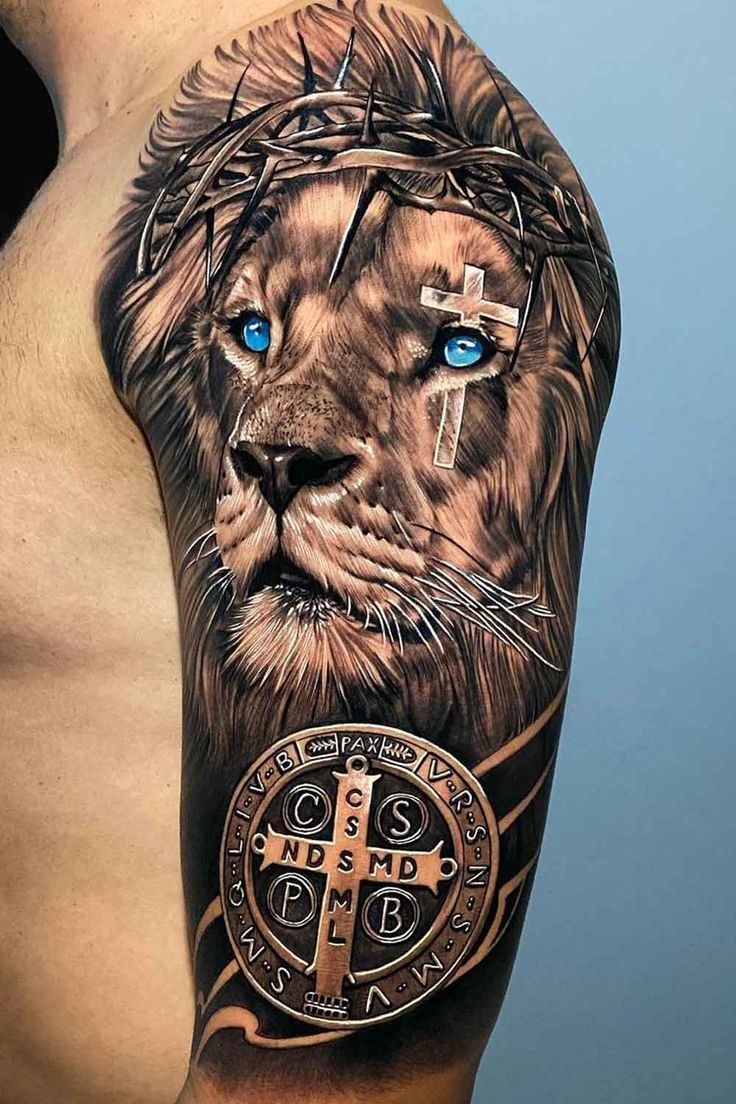



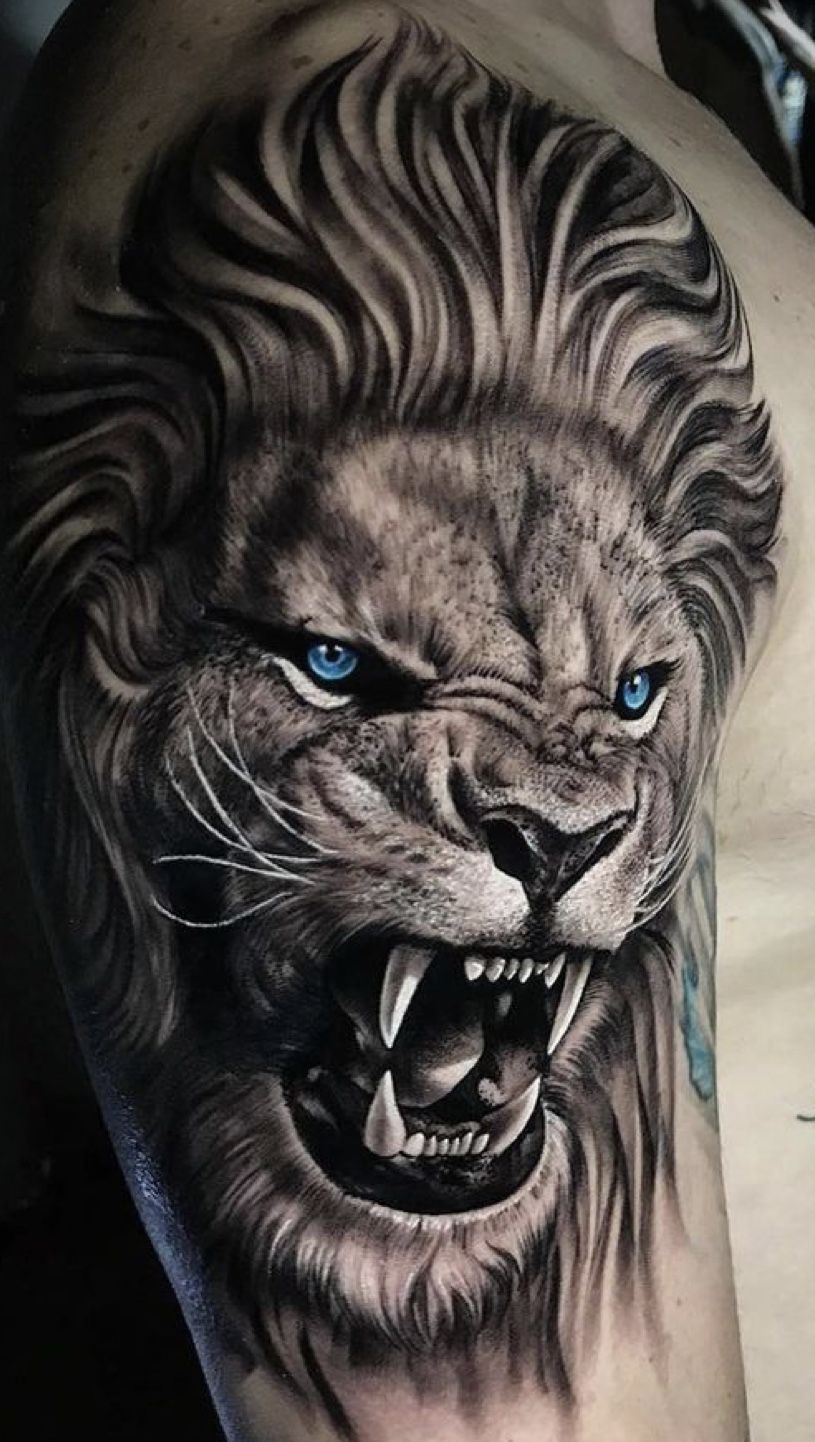






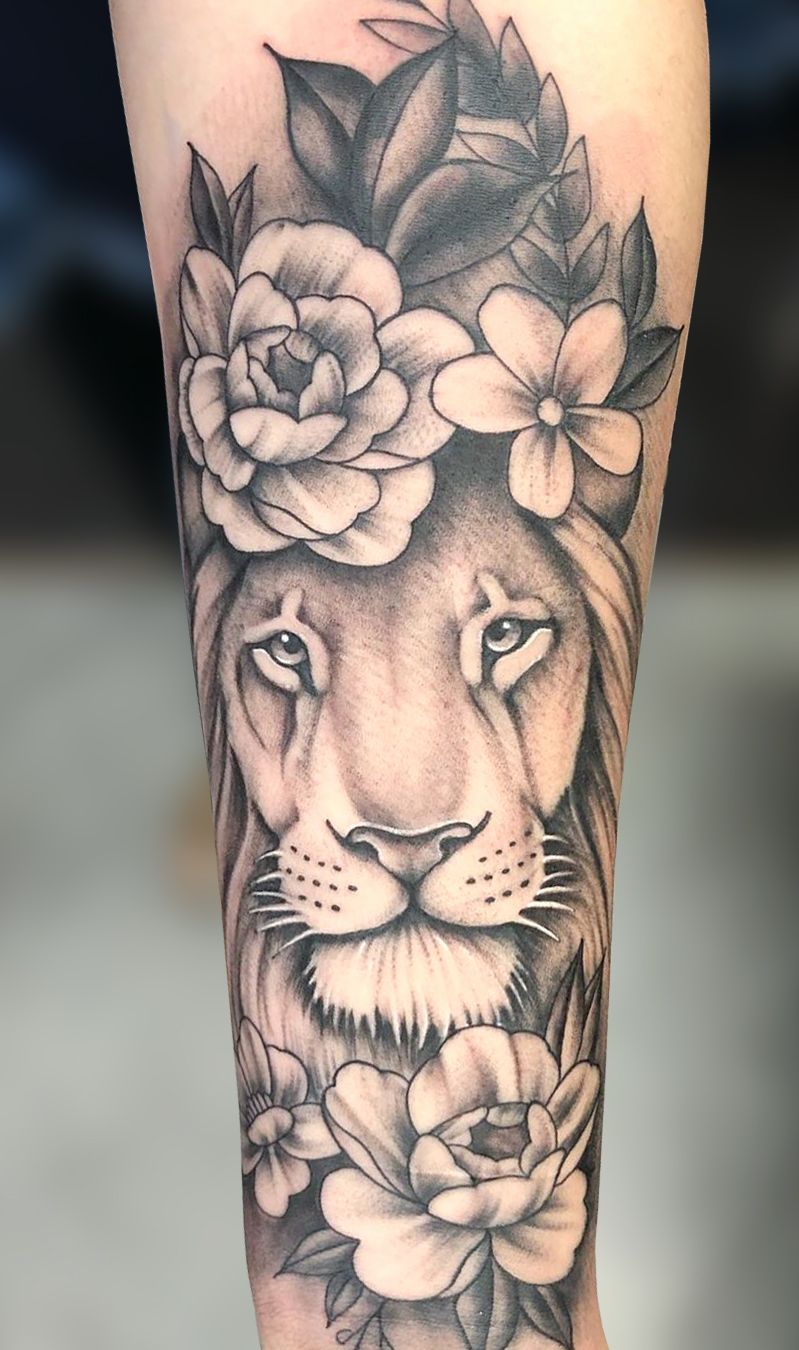



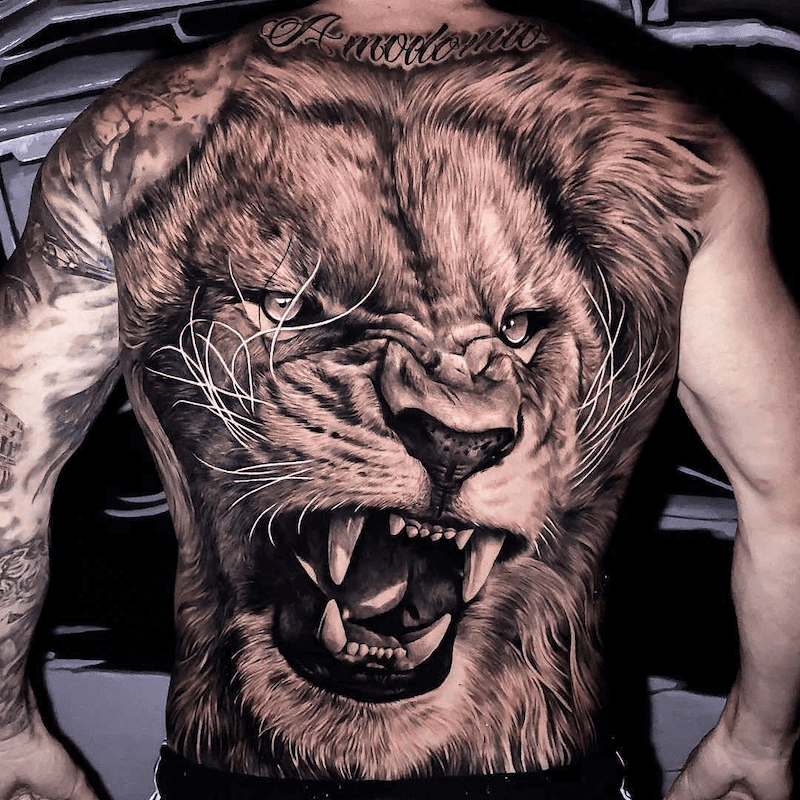

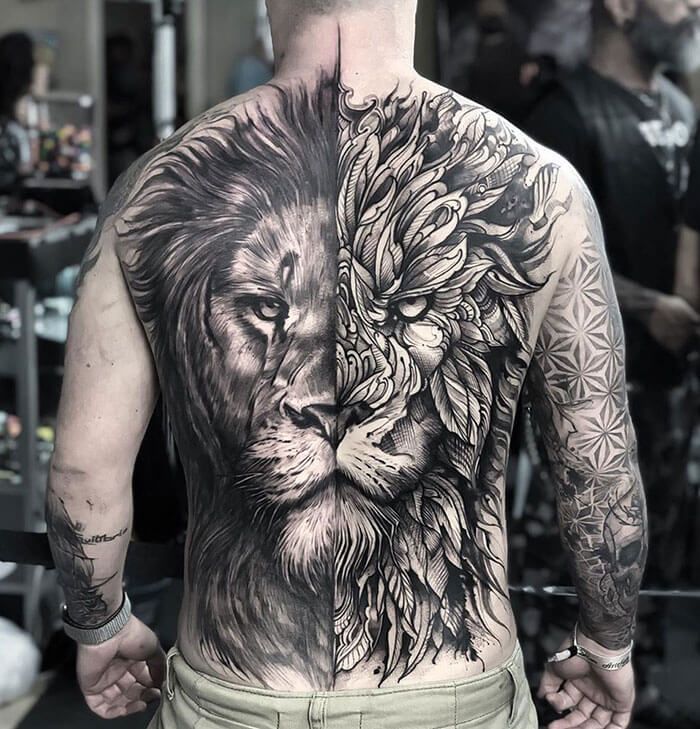








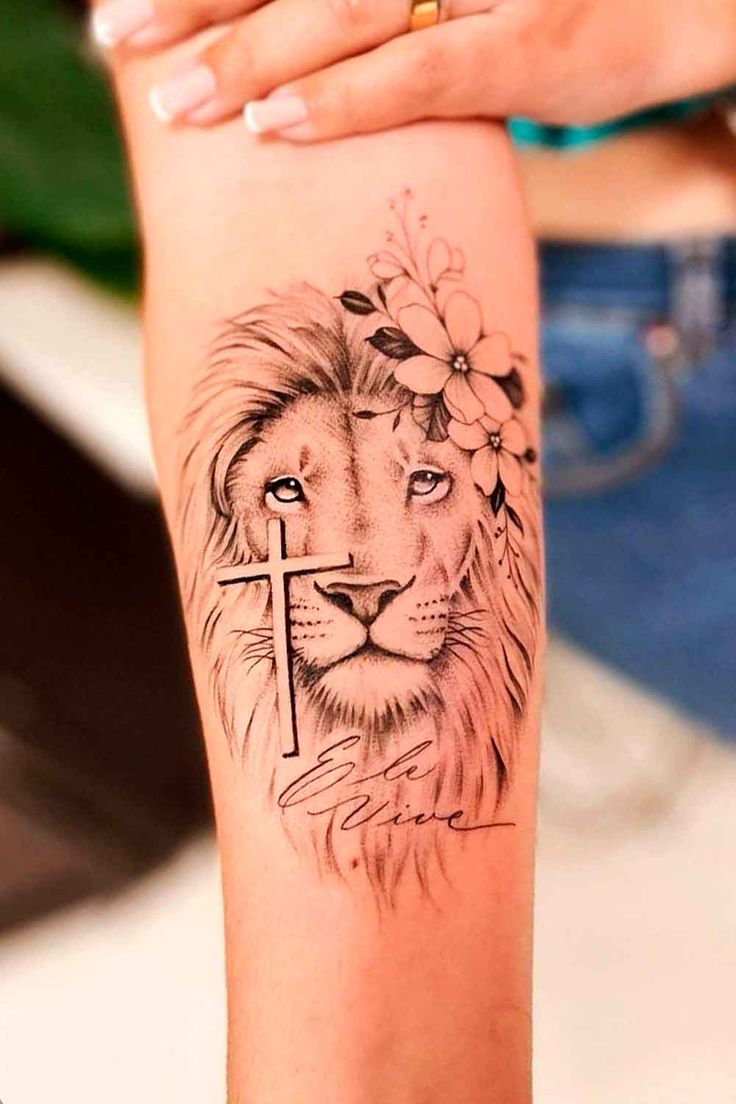

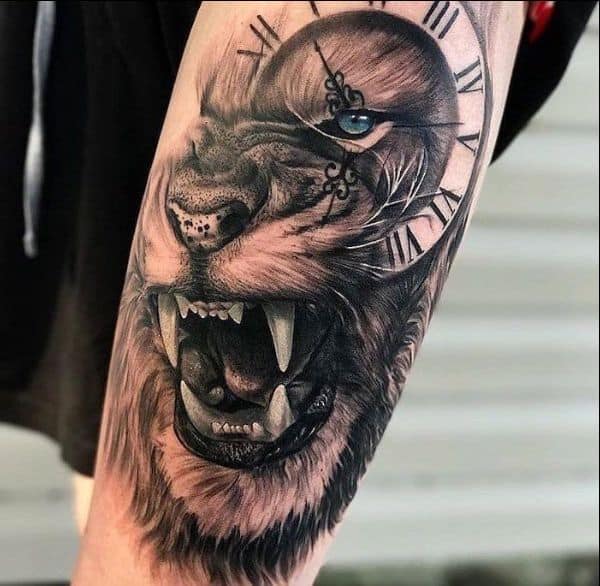
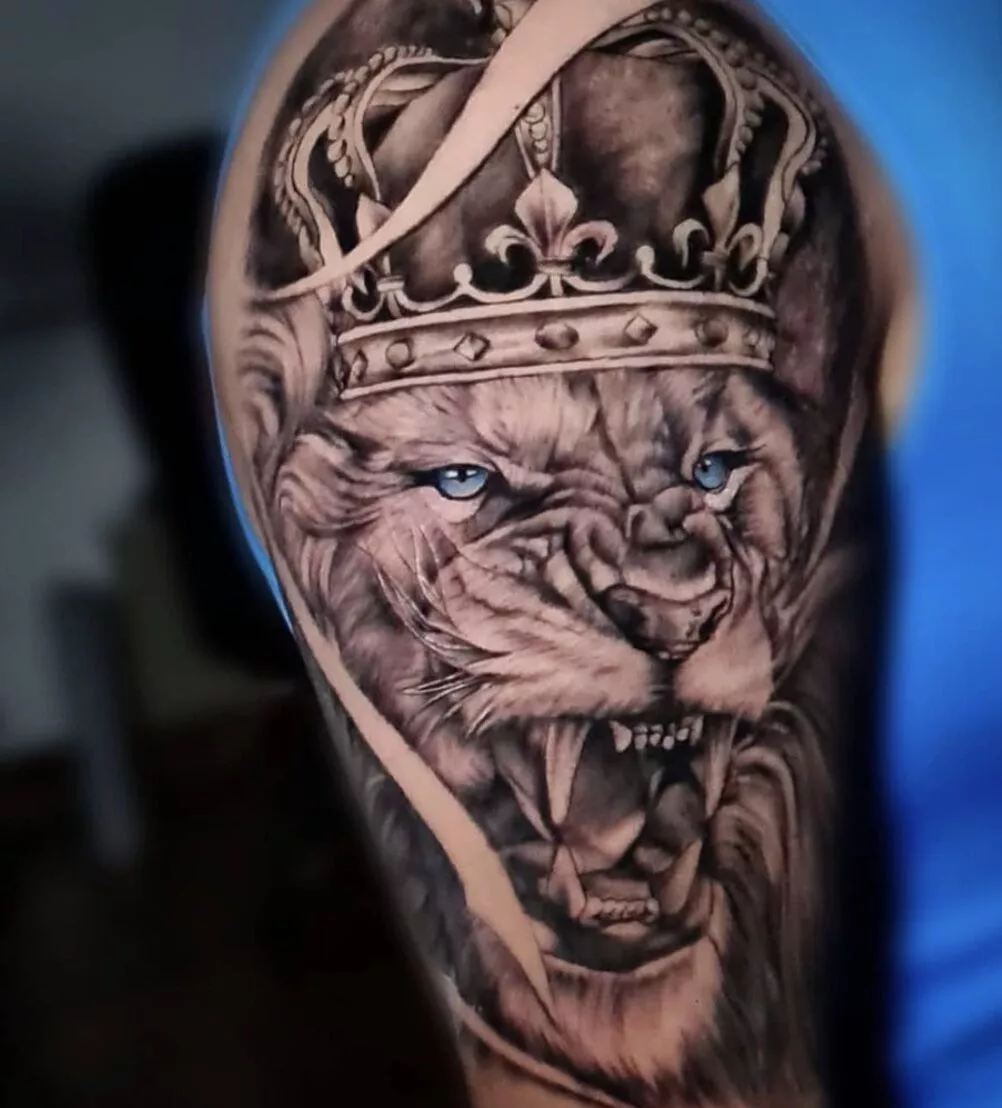








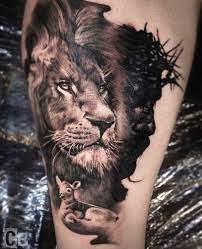




























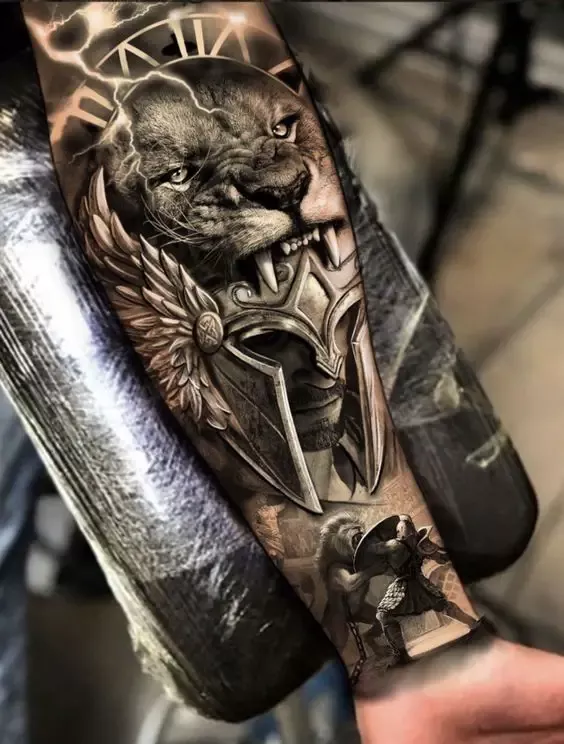

























































Comments